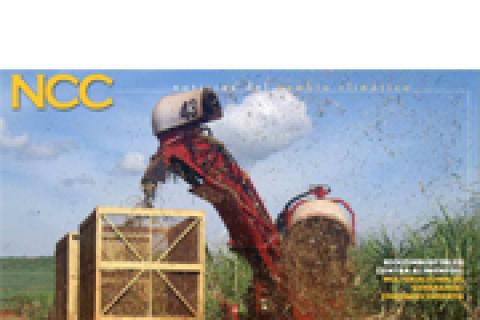The Thai government has set its policy on producing palm oil-based biodiesel as energy. At present, the country’s large-scale oil palm harvest areas account to around 400,000 hectares, but since 2006, a discourse on oil palm has emerged to promote its plantation as a “renewable source of energy”, a “country savior”, a “reforestation scheme”, a “wind-protection zone”, and a “transformation of deserted rice fields into palm fields”.
Other information
The promotion of large-scale fast-growing monoculture tree plantations started in Uruguay in 1987, with forestry law Nº 15939 of December 1987. Today these plantations occupy over one million hectares of land and not only lands in the “forestry priority” category.
The US South Carolina-based company ArborGen is a partnership between the timber corporations International Paper and Mead Westvaco, and the New Zealand-based Genesis Research and Development. ArborGen has been growing GE Eucalyptus hybrid trees and testing them for cold tolerance on a secret 1-acre plot in Baldwin County, Alabama, close to the Gulf Coast of Mexico. The place was found to be home to a number of experimental, genetically modified crops, many of which appear to be growing on a Loxley farm owned by agricultural giant Monsanto Co.
WRM has created a new video section in its website. You can find it in the page’s left column or going directly to http://www.wrm.org.uy/Videos/index.html.
The Congo rainforests of central Africa are, after the Amazon, the second largest rainforest on Earth and a major biodiversity hotspot: Two-thirds of the forest lies in the Democratic Republic of Congo (DRC) -- still divided by a vicious civil war fuelled by competition for control over natural resources, and that claimed 3.5 million lives. About 40 million people of DRC depend on the rainforests for their very survival.
Between 1959 and 1987, a great majority of the Ayoreo from Paraguay (see WRM Bulletin No. 96) were contacted by force and deported to places outside their vast ancestral territories. They were also displaced from their lands taken over for farming activities. This situation has submitted them to a high degree of dependency on the religious missions and the regional market.
Intense and continuing logging has taken place in Sarawak for the last 30 years or so. More than 95% of Sarawak's original forest cover has now been logged at least once. The few remaining portions of unprotected primary forest in Sarawak are in mountainous regions close to the border with Indonesia, and these are now being hastily logged by the five leading logging groups active in Sarawak and their myriad of subsidiaries and associated contractors.
Miguel A Altieri, Professor of Agroecology, University of California, Berkeley
Elizabeth Bravo, Red por una América Latina Libre de Transgenicos, Quito, Ecuador
By Daniel Cassol, March 2007 - MST Informa - Revista Sem Terra (Ed. 38)
Monoculture eucalyptus plantations are advancing over vast areas of the country, occupying traditional peoples’ territories, displacing them, evicting people from rural areas, thus contributing to the creation of poverty belts, with the context of violence and criminality these necessarily imply. And as if this were not enough, they also have their quota of bloodshed.
Loss of land and loss of access to natural resources is fuelling a livelihood and economic crisis among Cambodia's rural communities. "People are being dispossessed from their lands by those with political power and money," writes Shalmali Guttal in a recent report for Focus on the Global South.*


